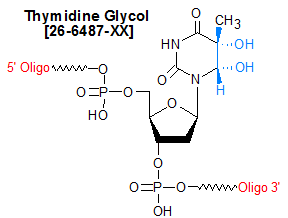In this section: Introduction | Quality Control | Purification | Modifications | Long Oligos | Price List
In this section: Introduction | Molecular Beacon FAQ's | Fluorescent Probes Price List | Other Fluorescent Molecular Probes
In this section: SPCT | DME SPCT Intro | Order DME TaqMan® Assays SPCT | SNP PCT Search | Gene Expression Assays | SPCT Design Center | GeneAssays
In this section: RNA Oligonucleotides | Quality Control | Purification | Modifications | RNAi Explorer™ Products and Prices | Custom RNAi | RNAi Design Guidelines | SmartBase™ siRNA Modifications | shRNA Explorer™
In this section: PCR Amplification & Analysis
In this section: Introduction | Genemer™ | GeneProber™ | Prober™ Gene Detection Kits | GScan™ Gene Detection Kits | Genemer™ Control DNA | Infectious Diseases
In this section: Gene Construction
In this section: Introduction | The Omni-Clean™ System | The Omni-Pure™ Plasmid Purification System | The Omni-Pure™ Genomic DNA Purification System | Viral DNA & RNA Purification | Microbial DNA Purification | Plant DNA Purification
In this section: Introduction | Quality Control | Purification | Modifications | Long Oligos | Price List
In this section: Introduction | Molecular Beacon FAQ's | Fluorescent Probes Price List | Other Fluorescent Molecular Probes
In this section: SPCT | DME SPCT Intro | Order DME TaqMan® Assays SPCT | SNP PCT Search | Gene Expression Assays | SPCT Design Center | GeneAssays
In this section: RNA Oligonucleotides | Quality Control | Purification | Modifications | RNAi Explorer™ Products and Prices | Custom RNAi | RNAi Design Guidelines | SmartBase™ siRNA Modifications | shRNA Explorer™
In this section: PCR Amplification & Analysis
In this section: Introduction | Genemer™ | GeneProber™ | Prober™ Gene Detection Kits | GScan™ Gene Detection Kits | Genemer™ Control DNA | Infectious Diseases
In this section: Gene Construction
In this section: Introduction | The Omni-Clean™ System | The Omni-Pure™ Plasmid Purification System | The Omni-Pure™ Genomic DNA Purification System | Viral DNA & RNA Purification | Microbial DNA Purification | Plant DNA Purification
Thymidine Glycol
Thymidine Glycol
Code : [Tg-Thy-Glycol]

Modification : Thymidine Glycol
Catalog Reference Number
Category
Modification Code
5 Prime
3 Prime
Internal
Molecular Weight (mw)
Extinction Coeficient (ec)
Technical Info (pdf)
Absorbance MAX
Emission MAX
Absorbance EC
26-6487
Minor Bases
[Tg-Thy-Glycol]
Y
Y
Y
338.21
8.7
PS26-6487.pdf
-
-
-
| Catalog No | Scale | Price | | 26-6487-05 | 50 nmol | $465.00 | | 26-6487-02 | 200 nmol | $465.00 | | 26-6487-01 | 1 umol | $543.00 | | 26-6487-03 | 2 umol | $664.00 | | 26-6487-06 | 5 umol | $1,993.50 | | 26-6487-10 | 10 umol | $3,542.00 | | 26-6487-15 | 15 umol | $4,428.00 |
| Discounts are available for Thymidine Glycol ! |
| Modification* Discount Price Structure |
|
1 site/order
|
List price
|
|
2 sites/order
|
10% discount
|
|
3 sites/order
|
20% discount
|
|
4 sites/order
|
30% discount
|
|
5-9 sites/order
|
50% discount
|
|
10+ sites/order
|
60% discount
|
|
*Exceptions apply
|
Thymidine Glycol is classified as an oxidized nucleotide, and is primarily used in studies of oxidative DNA damage and associated repair mechanisms. In the cell, thymidine glycol DNA lesions are formed when the 5,6-double bond of thymidine is oxidized by oxidative metabolic processes, ionizing radiation, or industrial chemical oxidizers like potassium permanganate and osmium tetroxide. Although it does not appear to be mutagenic, it generates more structural distortion to the double helix than any other oxidatively-damaged base. Possibly as a result of this, thymidine glycol effectively blocks DNA polymerases, resulting in stalled replication forks, making it a potentially lethal lesion. However, despite the more extensive structural distortion, thymidine glycol lesions are most commonly repaired by the BER, rather than the NER mechanism (1,2).
References
1. Hatahet, Z., Wallace, S.S. Translesion DNA Synthesis. in DNA damage and repair. Volume I (1998), Humana Press: 231-232.
2. Nilsen, H., Krokan, H.E. Base excision repair in a network of defence and tolerance. Carcinogenesis (2001), 22: 987-998. - Thymidine Glycol
|
|
